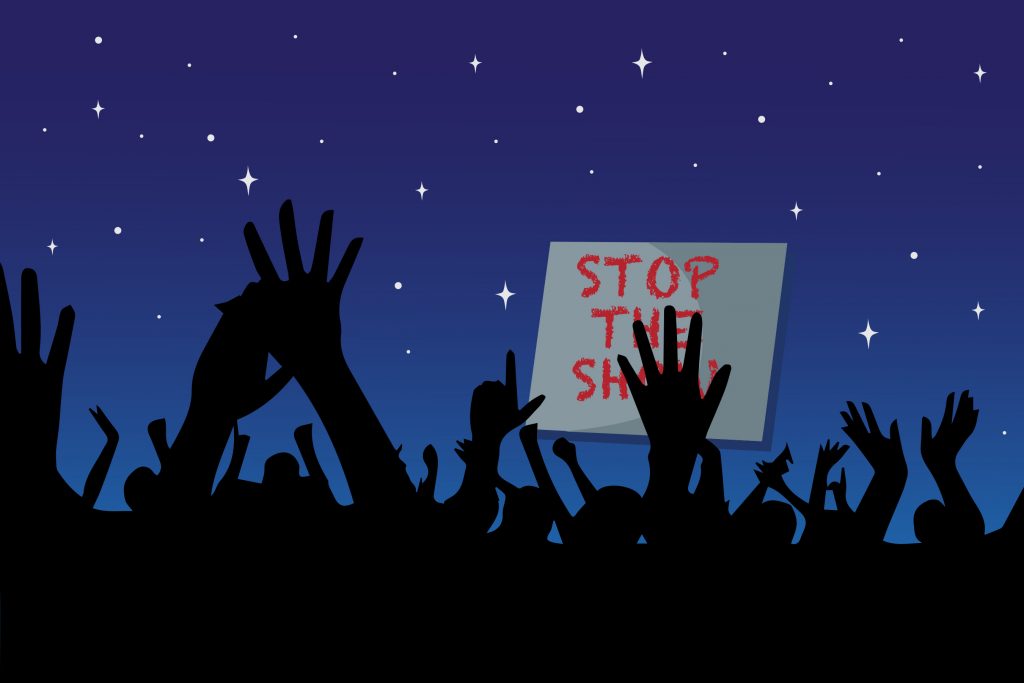On Friday, Nov. 6, eight people were reported dead due to crowd crush at Travis Scott’s Astroworld Festival in Houston. Five days later, the victims have all been identified, the youngest victim being 14 years old and the oldest being 27 years old.
Nearly one week after the incident, conversations are igniting across the world regarding the conditions which led to the Astroworld tragedy. A majority of these conversations are due to the overwhelming discussion of the festival on social media platforms — most noticeably, TikTok. The massive influx of videos surrounding the incident have only served to further contextualize Scott’s fatal ignorance the night of Nov. 6. Despite TikTok’s never-ending feed, the Travis Scott videos were seemingly inescapable.
The videos shared by festivalgoers this past weekend are horrifying. TikTok laid bare the tragedy within the Astrodome, starting with videos of the conditions which led to the fatal crowd crush that night. Hundreds of people were seen storming the event in order to attend the concert without paying the actual ticket price. Many viewers claim that these people should feel ashamed for so unabashedly contributing to the packed concert venue.
Then there were the videos of the actual victims of crowd crush. A large majority of the eight fatalities were due to cardiac arrest, and videos quickly surfaced of surviving victims violently convulsing on the floor without any medical assistance in sight. Some shared their point of view from the actual floor, where they laid in stacks of fallen people unable to regain their footing. There was even video of Travis Scott seemingly observing an unconscious body being crowd surfed away from the stage. Even if ambulances were in the background, videos made clear that medical staff wouldn’t have been able to reach many victims anyway due to the extreme crowds. Some attendees were even so entitled as to jump on top of the ambulance, escalating an extremely difficult situation to an impossible one.
Perhaps most heartbreaking of all was the documentation of attendees’ desperate attempts to stop the show. In nearly every video, there are haunting screams for help. These screams, clearly audible and discernable, complicate all claims of ignorance from Travis Scott and his staff. Two people in particular, one male and one female, were seen actually climbing on top of elevated surfaces or the stage itself to inform lighting and camera crews that people in the crowd were either dying or already dead. Crews ignored these calls and instructed these people to get off of the stage.
Travis Scott is definitively and unequivocally responsible for the deaths of his eight fans.
If these videos prove one thing, it should be that Scott was fully aware of the unsafe conditions within the Astrodome and continued to perform anyway. When Travis Scott saw a passed-out fan, he called for medical attention. Yet when he saw the ambulance, he told fans to put up a middle finger. When he saw a limp body held up in the air, he continued singing. And when he heard his fans screaming for help, he responded, “Who asked me to stop? You all know what you came here to do.”
Though many could argue that the deaths of these eight innocent victims are due to fellow concertgoers rather than the celebrity himself, Travis Scott, like all other celebrities, is responsible for ensuring his concerts are safe. While videos of the Astroworld Festival continue to circulate, so too do the videos of several other celebrities quickly and safely stopping their shows once they realize that even one person is in danger.
Travis Scott has a history of instigating unsafe concert behavior. In 2015, Scott was arrested minutes into his show for encouraging fans to jump barriers and rush the stage. In 2017, Scott encouraged a fan to jump from a second-floor balcony at his show, leaving another fan partially paralyzed after he was pushed off the balcony. Cancel culture is rightfully criticized by many for being toxic and impulsive. Still, in this case, cancel culture proves capable of bringing about important awareness and accountability.
Rave culture, though emotionally intense, is not solely about violence. In fact, the discerning feature of rave culture is community, and this community needs to look out for each other. Outsiders can easily claim that people should not have stormed the venue, or that people should not have pushed the people around them without fully understanding the constraints of crowd surge. Crowd crush is not fixable by those trapped in the crowds, but it is easily avoidable with adequate planning from external sources. This includes Travis Scott, his performance crew, medical staff, event organizers and venue owners.
With the collaboration of many, concerts can become a place to rage and release intense emotions in a safe manner. Water should be free and accessible to all attendants. Medical staff should be properly trained and educated on common concert illnesses like cardiac arrest. Venues should be properly secured and spacious. Performers should be vigilant, and, of course, attendants should practice proper concert etiquette. If someone is hurt, follow in the steps of the two advocates who tried their hardest to get medical attention. Above all, please look out for each other and stay safe.



